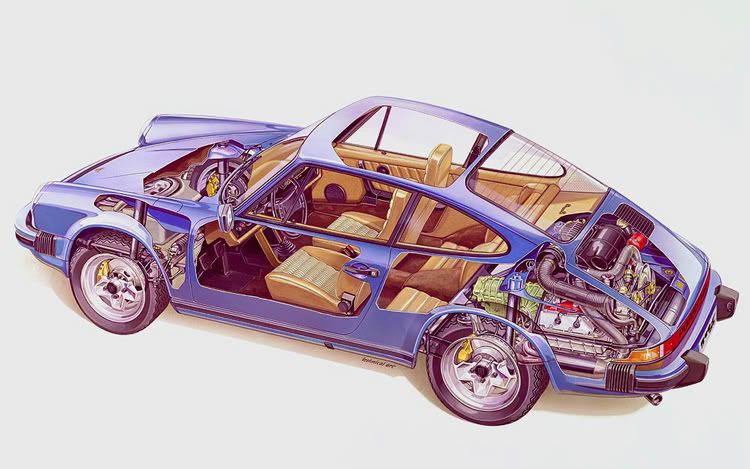Gyroscopic torque occurs when an object, which is already rotating about one axis, begins to rotate about another axis (which is not parallel to the original axis). In vector form:
)
The gyroscopic torque

is always perpendicular to both axes of the applied rotations. I is the second moment of inertia and

are vectors describing the angular velocity (rotation)
So with reference to the motorcycle example (which I am assuming has a crankshaft spinning in the same direction as the wheels). The axis of rotation of the crank is the same as the wheels' axis, and if it spins in the same direction as the wheels then it's rotation vector

points to the left. If the cycle enters a left hand turn, then it must rotate (yaw) to the left - effectively rotating about its own vertical axis. Hence the axis of rotation (for the left turn) is the vertical axis and the rotation vector

points up.
These simultaneous rotations (about two different axes) cause a gyroscopic torque acting about an axis perpendicular to both - which in this case is the same as looking straight forward from the bike. Because of the direction of the other two rotations, this torque will try to lean the bike to the right i.e. away from the direction of the turn. A rider will just lean more into the turn to counter this.
Conversely, a motorcycle with a crank that spins opposite to the sense of the wheels will experience a gyroscopic torque in the opposite direction - the gyro torque will try to lean the bike into the corner, counteracting some of the normal cornering effect.
A similar process applies with an F1 car (or any other race car) - just in F1 the crankshaft rotation axis is down the centerline, rather than parallel to the wheels. The difference is that the torque (moment) manifests as weight transfer between the wheels, with some consequent body roll / pitch, rather than the big lean angles we see on bikes. On an F1 car the gyro torque due to the crankshaft, and rotation into a corner, will cause weight transfer either from front to back axle, or the other way, depending on whether the crank spins clockwise or anti-clockwise when viewed from the back.


